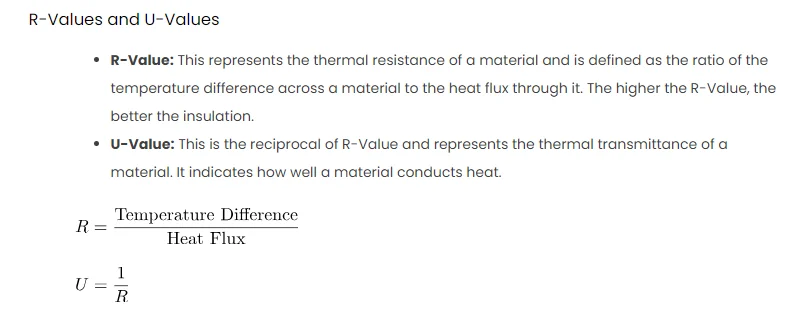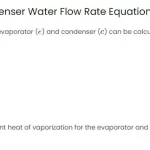R-Values and U-Values are two important concepts in HVAC that measure the thermal performance of materials and systems. R-Value is a measure of how well a material resists heat flow, while U-Value is a measure of how much heat is transferred through a material or a system. Both values are expressed in units of W/m²K, which means watts per square meter per degree Kelvin.
The higher the R-Value, the better the insulation of a material. The lower the U-Value, the lower the heat loss or gain through a material or a system. For example, a double-glazed window has a lower U-Value than a single-glazed window, which means it reduces heat transfer and improves energy efficiency. A thick layer of fiberglass insulation has a higher R-Value than a thin layer, which means it slows down heat flow and keeps the indoor temperature more stable.
R-Values and U-Values are related by a simple formula: U-Value = 1 / R-Value. This means that the U-Value is the reciprocal of the R-Value, and vice versa. Therefore, if you know one value, you can easily calculate the other. For example, if a material has an R-Value of 5, its U-Value is 1 / 5 = 0.2.
R-Values and U-Values are useful for comparing the thermal performance of different materials and systems, and for designing and optimizing HVAC systems. By choosing materials and systems with appropriate R-Values and U-Values, you can improve the comfort, health, and energy efficiency of your indoor environment.
Basic Theory
R-Values and U-Values
- R-Value: This represents the thermal resistance of a material and is defined as the ratio of the temperature difference across a material to the heat flux through it. The higher the R-Value, the better the insulation.
- U-Value: This is the reciprocal of R-Value and represents the thermal transmittance of a material. It indicates how well a material conducts heat.
Procedures for Calculation in Excel
Step 1: Gather Material Information
Collect data on the materials involved, including their thermal conductivity ().
Common HVAC Material Thermal Conductivity Chart
| Material | Thermal Conductivity (W/m·K) |
|---|---|
| Air (at 25°C) | 0.025 |
| Aluminum | 205 |
| Copper | 398 |
| Steel | 50 – 60 |
| Glass Wool (Fiberglass) | 0.035 – 0.04 |
| Mineral Wool | 0.03 – 0.05 |
| Polyurethane Foam | 0.02 – 0.03 |
| Plywood | 0.13 – 0.17 |
| Concrete | 1.4 – 2.5 |
| Water (at 20°C) | 0.6 |
Step 2: Determine Area and Thickness
Identify the area () and thickness (
) of the material.
Step 3: Calculate R-Value
Step 4: Calculate U-Value
Scenario: Wall Insulation Calculation
Let’s consider a scenario with a wall made of fiberglass insulation:
- Thermal conductivity of fiberglass (
): 0.04 W/(m·K)
- Area (
): 10 m²
- Thickness (
): 0.1 m
Excel Calculation
Create an Excel spreadsheet with the following formulae:
Fill in the values and perform the calculation.
Excel Table
| Material | Thermal Conductivity (W/(m·K)) | Area (m²) | Thickness (m) | R-Value | U-Value |
|---|---|---|---|---|---|
| Fiberglass Insulation | 0.04 | 10 | 0.1 | =B2/(C2*D2) | =1/E2 |
Results
Using the Excel formulas, the R-Value is calculated to be 0.25 (m²·K/W), and the corresponding U-Value is 4 (W/(m²·K)).
MATLAB Comparison
Now, let’s perform the same calculation in MATLAB for comparison:
% MATLAB Calculation
k = 0.04; % Thermal conductivity (W/(m·K))
A = 10; % Area (m²)
d = 0.1; % Thickness (m)
R = d / (k * A);
U = 1 / R;In MATLAB, the calculated R-Value is also 0.25 (m²·K/W), and the U-Value is 4 (W/(m²·K)).

